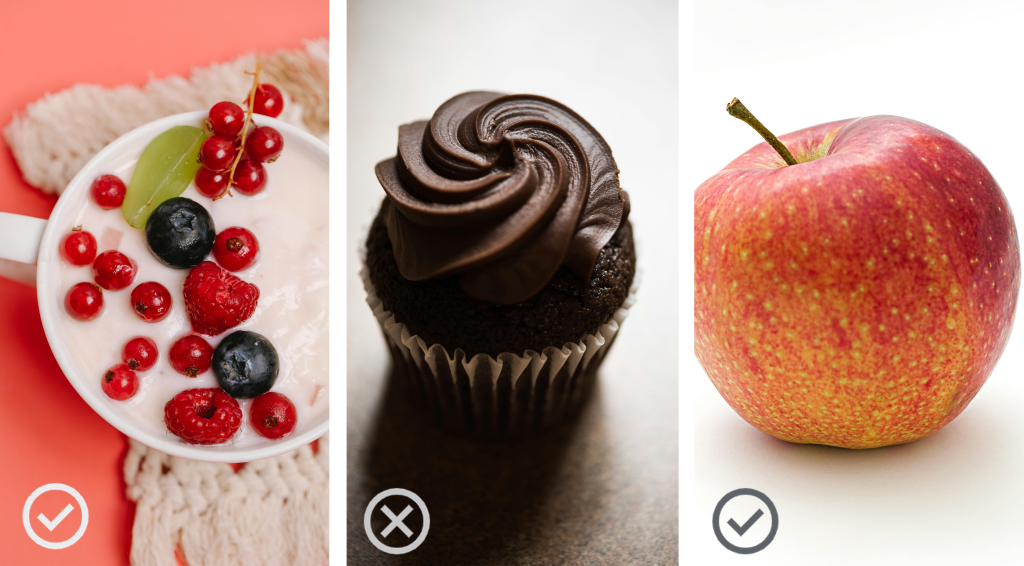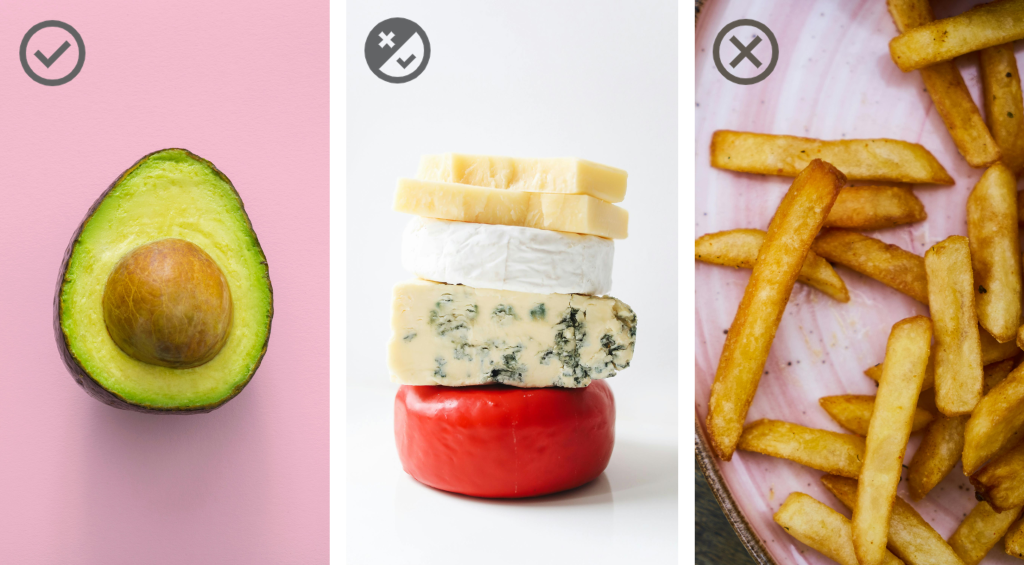11.2 Nutrition

Nutrition is a science and process by which the body takes in calories, in the form of food, to:
- Sustain life to ensure that the body has the absolute essentials to keep vital processes running, such as breathing, circulation, and basic metabolic functions. Even if someone is not in peak health, the minimum level of nutrition needed to sustain life keeps them alive, though potentially at risk of deficiencies, fatigue, or illness.
- Maintain health to ensure that bodily functions operate efficiently and optimally. This involves getting enough nutrients to support immune function, keep organs working properly, maintain energy levels, prevent deficiencies, and reduce the risk of disease.
- Support growth to ensure the body has the nutrients required for building and developing new structures in the body (e.g., muscle mass, bone density, and other tissues). For children and adolescents, it involves the processes of physical maturation, while in adults, it can mean maintaining and repairing tissues.
 A calorie is a unit of energy used to quantify the amount of energy provided by food. One way to think of calories is like the battery level on a smartphone. If you don’t “charge” the body with enough calories, you will run out of energy, just like how a phone that’s on 1% battery will not work well for long. Also, if one constantly overcharges their phone beyond what is needed, it can cause issues in the long run (storing extra energy as body fat). The key is to “balance the battery” by eating enough to stay charged and active without going overboard.
A calorie is a unit of energy used to quantify the amount of energy provided by food. One way to think of calories is like the battery level on a smartphone. If you don’t “charge” the body with enough calories, you will run out of energy, just like how a phone that’s on 1% battery will not work well for long. Also, if one constantly overcharges their phone beyond what is needed, it can cause issues in the long run (storing extra energy as body fat). The key is to “balance the battery” by eating enough to stay charged and active without going overboard.
Food represents any nutritious substance consumed by living organisms to sustain life and promote energy, growth, and cellular repair. It is typically plant- or animal-based, containing a unique combination of nutrients, tiny substances that provide nourishment essential for the maintenance of life and growth. Nutrients are divided into two main categories – macronutrients and micronutrients.
Macronutrients
Macronutrients are large nutrients that our body needs in large quantities. Food contains macronutrients, but they are not the same thing as the foods themselves. For example, if someone asks you to name a carbohydrate, you might think of pasta. But pasta contains carbohydrates rather than being a carbohydrate itself.
There are three macronutrients essential for your body to function at its best:
1. Carbohydrates
- Commonly referred to as “carbs”
- Provide the body with a quick and easy source of energy
- Composed of carbon, hydrogen, and oxygen (hence where the name comes from)
- Categorized as simple (sugars) and complex (starches and fibre)
Simple Carbohydrates

These are sugars that your body can break down quickly. Foods like candy, soda, and pastries have a lot of simple carbs. Simple carbs give you a quick burst of energy. However, if they come from super-processed or sugary foods, they can lead to energy crashes later and might not offer much nutritional value besides calories.
| Where You Find Them | “Good” Sources | “Bad Sources” |
|---|---|---|
| Foods like candy, soda, and pastries have a lot of simple carbs. You’ll also find them naturally in fruits and dairy products.
|
|
|
Complex Carbohydrates

These carbs have more complex structures that take longer for your body to break down. Because your body digests these carbs more slowly, you get a steadier supply of energy. They also often come with vitamins, minerals, and fibre, which help keep your digestive system healthy and make you feel full longer.
| Where You Find Them | “Good” Sources | “Bad Sources” (Heavily Refined/Low Nutrient) |
|---|---|---|
|
|
|
2. Proteins
- The “building blocks” are essential for muscle/tissue repair, growth, and satiety (the feeling of fullness).
- Adequate protein intake, spaced throughout the day, supports both metabolic health and functional strength.
- One’s protein needs will vary. For those who work out frequently, a slightly higher intake may be required to adequately support muscle recovery.

“Good” sources offer other important nutrients while being lower in harmful fats or additives:
| Good Sources | Examples |
|---|---|
| Lean Meats & Poultry | Chicken breast, turkey |
| Seafood | Salmon, tuna, shrimp |
| Eggs | Whole eggs (yolks contain additional nutrients), egg whites (pure protein, but missing yolk nutrients) |
| Dairy | Low-fat milk, Greek yogurt, cottage cheese |
| Plant-Based Proteins | Beans and legumes (e.g., lentils, black beans), tofu, tempeh, or edamame (soy products), nuts and seeds (e.g., almonds, chia seeds) |
“Bad” sources (heavily refined/low nutrient value) offer added sugars, sodium, or saturated fats:
| Bad Sources | Examples |
| Processed meats | Bacon, sausages, hot dogs, deli meats (such as pepperoni and salami) |
| Fried meats or seafood | Fried chicken, breaded fish sticks |
3. Fats
Fats have the following characteristics:
- Provide long-term energy storage and aid in nutrient (vitamin/mineral) absorption.
- A main component in the creation of new cells (plasma membrane) and other key structures.
- Classified as “good fats” (e.g., unsaturated fats), “okay fats” (some saturated fats), and “bad fats” (trans fats).

Unsaturated Fats
Unsaturated fats are often considered “good” because they support heart health and other vital functions. These include:
- Monounsaturated Fats
- Avocados
- Olive oil
- Nuts (e.g., almonds, cashews)
- Polyunsaturated Fats
- Fatty fish (e.g., salmon, sardines)
- Flaxseeds and chia seeds
- Sunflower seeds and walnuts
Saturated Fats
Saturated fats are often viewed as “less good” because they can raise unhealthy cholesterol levels and increase the risk of heart disease if eaten in excess. These include:
- Butter
- Full-fat cheese
- Fatty cuts of meat (e.g., certain steaks, bacon)
Trans Fats
Trans fats are often viewed as “bad fats” and are typically found in highly processed foods, and many places have restricted or banned them. These include:
- Some fried foods
- Packaged baked goods (e.g., certain cookies, pastries)
Micronutrients
Micronutrients are substances your body needs in smaller amounts compared to macronutrients. They include vitamins, minerals, and water, which you actually need in fairly large quantities, even though they are often grouped as micronutrients.
| Micronutrient | Definition | Types | Enriched Foods |
|---|---|---|---|
| Vitamins | Organic compounds (they contain carbon) are essential for many body functions, such as immune response, energy production, and bone strength. |
|
|
| Minerals | Inorganic elements (they do not contain carbon) support bodily functions such as bone strength and oxygen transport. |
|
|
| Water | Although grouped with micronutrients, water is something we need in large quantities every day. It’s an inorganic compound (no carbon) and crucial for life. It helps regulate body temperature, aids digestion and nutrient transport, and makes up around 60 to 70% of your body. |
|
|
Consumption
Calorie Intake
The number of calories needed to maintain adequate nutrition varies from person to person based on many factors:
- Age: Younger individuals often burn more calories because their bodies are still growing and tend to be more active.
- Sex: Males typically have more muscle mass than females, which means they burn more calories at rest compared to females and require more to sustain what they have.
- Activity level: The more active you are, the more energy your body requires to fuel your muscles and movements.
- Metabolism: It’s the process by which your body converts the food you eat into the energy you need to function. Some people have a faster metabolism (they burn calories more quickly), while others have a slower one.
Use this calorie calculator to keep track of the amount of calories, fat, protein, carbs, fibre, and total sugar you consume.
Water Intake

Like calories, daily water intake requirements can vary based on factors such as age, activity level, climate, and overall health. A general recommendation, however, is 8–10 cups (2–2.5 L) per day (Institute of Medicine, 2005).

